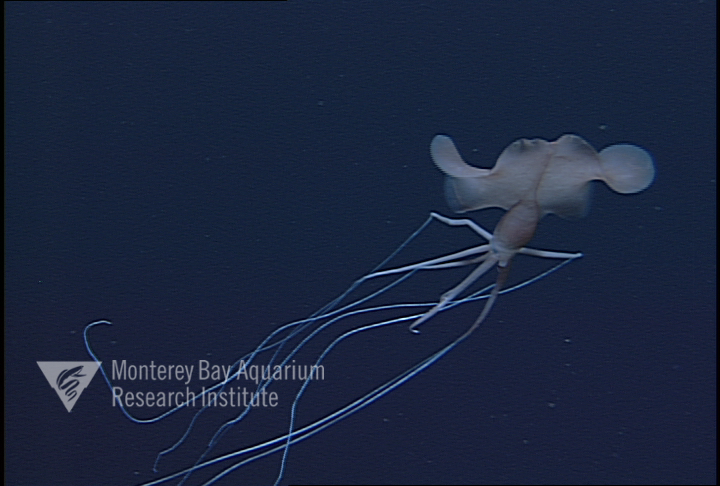Description
General:
Distinguished by distinctively large, terminal fins that are as long or even longer than the body length and equally as wide.
Geographic Information
Ocean range (global):
Eastern to central Pacific Ocean, in tropical to subtropical waters.
Habitat description:
Mesopelagic.
Additional Information
Key visual features:
Looks like they have bent "elbows."
References
Encyclopedia of LifeTree of Life
World Register of Marine Species
National Center for Biotechnology Information
Vecchione, M. and R.E. Young (1998). The Magnapinnidae, a newly discovered family of oceanic squid (Cephalopoda: Oegopsida). South African Journal of Marine Science, 20: 429-437. http://doi.org/10.2989/025776198784126340
Osterhage, D., H. MacIntosh, F. Althaus, and A. Ross (2020). Multiple observations of Bigfin Squid (Magnapinna sp.) in the Great Australian Bight reveal distribution patterns, morphological characteristics, and rarely seen behaviour. PLoS ONE, 15(11): e0241066. https://doi.org/10.1371/journal.pone.0241066
Roper, C. F. E. and P. Jereb (2010). "Family Magnapinnidae" in Cephalopods of the world. An annotated and illustrated catalogue of species known to date. Volume 2. Myopsid and Oegopsid Squids. FAO Species Catalogue for Fishery Purposes. No. 4, Vol. 2. Rome: FAO.
Vecchione, M. and R.E. Young (2019). "Magnapinna pacifica Vecchione and Young, 1998. Pacific bigfin squid." The Tree of Life Web Project. Last modified 3/26/19. http://tolweb.org/Magnapinna_pacifica/19449.
Vecchione, M., R.E. Young, A. Guerra, D.J. Lindsay, D.A. Clague, J.M. Bernard, W.W. Sager, A.F. Gonzalez, F.J. Rocha, and M. Segonzac (2001). Worldwide observations of remarkable deep-sea squids. Science, 294: 2505-2506. https://doi.org/10.1126/science.294.5551.2505
Citation:
Magnapinna pacifica
(Vecchione and Young, 1998) Deep-Sea Guide (DSG) at http://dsg/mbari.org/dsg/view/concept/Magnapinna%20pacifica. Monterey Bay Aquarium Research Institute (MBARI). Consulted on 2025-12-02.

 Click here for a larger image.
Click here for a larger image.

